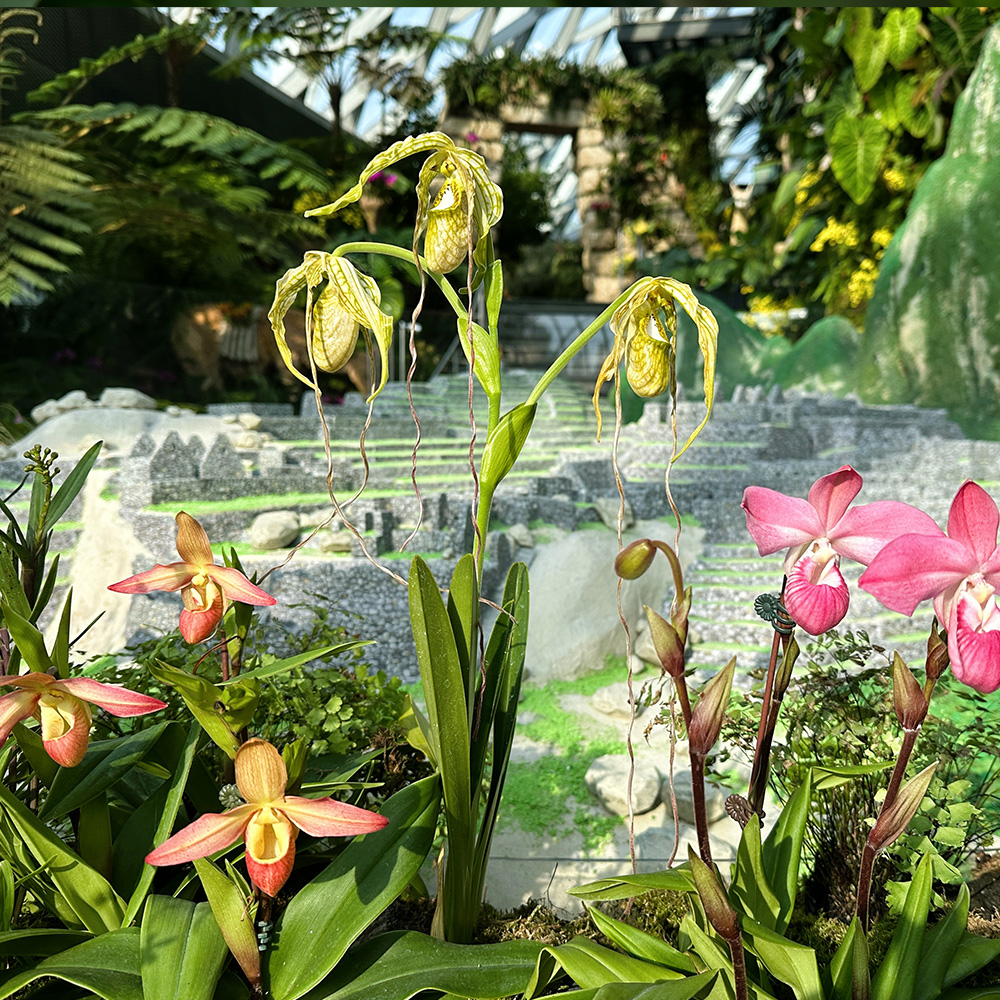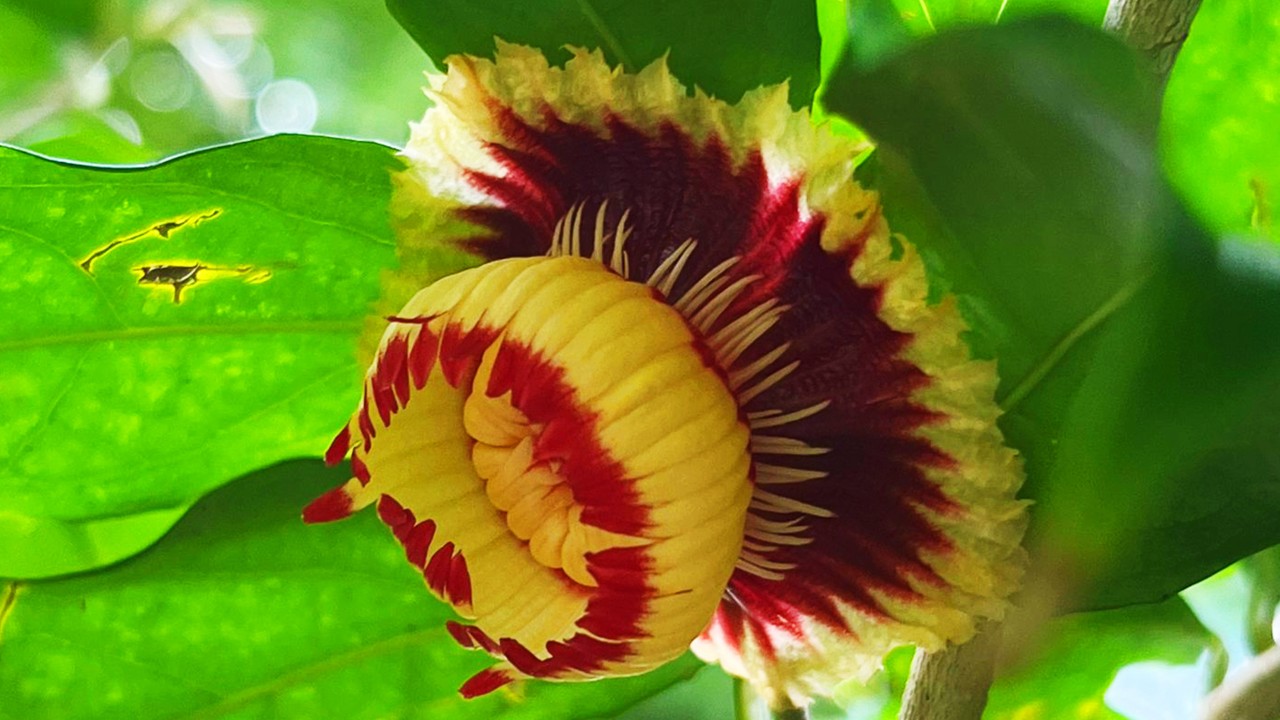 Vivid flower of Napoleon's Hat. It has a saucer-shaped frilly corolla with cream red tipped staminodia (sterile stamens with no anthers). The round coronate on top is cream-coloured with a reddish margin and hides the stamens and carpels within.
Vivid flower of Napoleon's Hat. It has a saucer-shaped frilly corolla with cream red tipped staminodia (sterile stamens with no anthers). The round coronate on top is cream-coloured with a reddish margin and hides the stamens and carpels within.
A member of the Lecythidaceae family, Napoleonaea is a relatively small genus with ten species of small tropical trees and shrubs distributed mainly in tropical West Africa. The genus was described by Palisot de Beauvois, a French naturalist in 1804 who named it after Napoleon Buonaparte, who was crowned as the French Emperor the very same year.
Growing up to 6 meters in height, Napoleon’s hat (Napoleonaea imperialis) is a multi-branched small understory tree. The cream and red coloured flower is about 5 cm in diameter and is borne on the stem. They are almost stalk-less, with a saucer shaped base with frilly margins and a coronet ‘crown’. The scent of the flowers are said to remind one of cheesecake or even butterscotch! They are pollinated by insects such as thrips. The roundish fruit is brown to dark-orange, each about 5 cm in diameter and containing one to a few kidney-shaped seeds.
The flower structure is reminiscent of the ribbon cockade on the bicorne hats that Napoleon favored, hence it became the namesake for both the botanical and common names of this species.
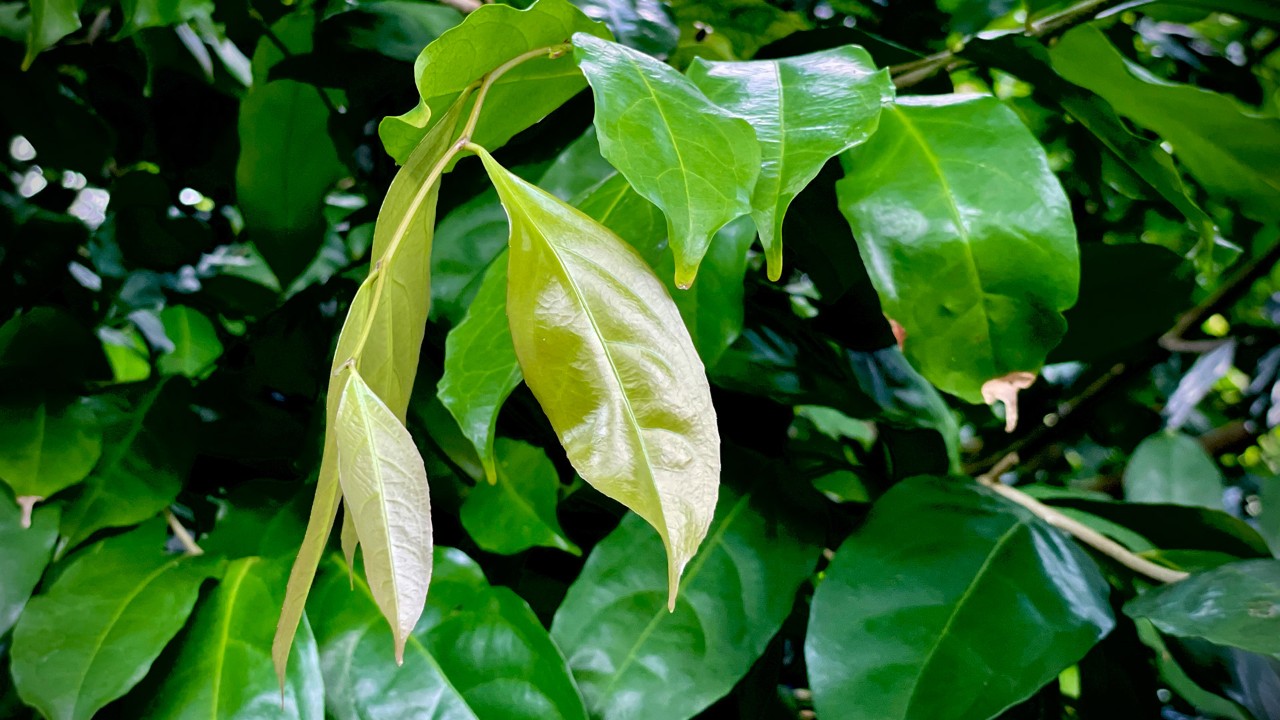 The leaves of Napoleonaea have pronounced drip tips. It is an adaptation of rainforest trees that enable the plant to move surface water efficiently so they can dry off more quickly after rain.
The leaves of Napoleonaea have pronounced drip tips. It is an adaptation of rainforest trees that enable the plant to move surface water efficiently so they can dry off more quickly after rain.
Valued by collectors and horticulturists alike for its unusual and vivid flowers, this small tree can be used in landscaping where conditions are suited, as N. imperialis has similar requirements as the related Barringtonia genus, which mostly prefer partial shade over full sun.
In Nigeria, where this plant is native, different parts of the tree are used in traditional medicine to treat wounds. The twigs are being used as traditional chewsticks for oral hygiene while the fruits’ sugary pulp is used for desserts.
Research has also found that the leaves and fruit extracts yield many bioactive compounds which have anti-bacterial properties as well as molluscicidal, which means it is poisonous against snails.
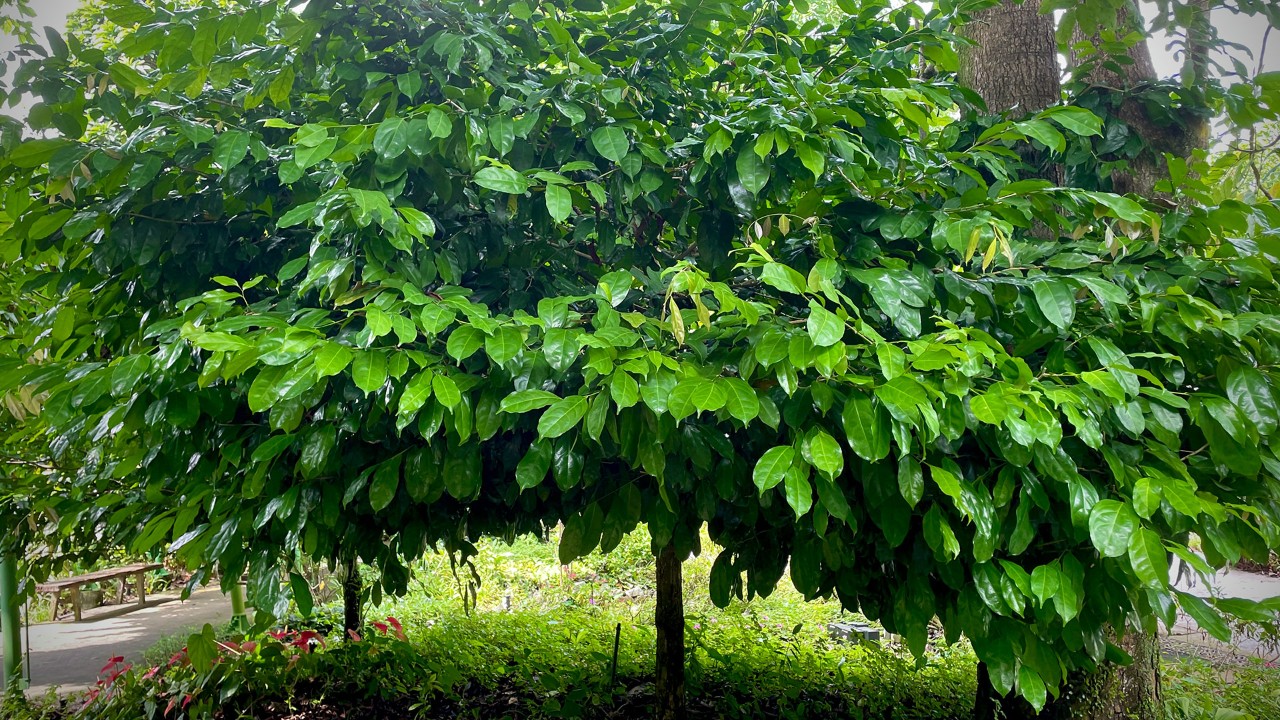 Napoleon’s Hat trees in Fruits and Flowers courtyard
Napoleon’s Hat trees in Fruits and Flowers courtyard
In the Gardens, you can find this species planted at the courtyard of Fruits and Flowers, alongside another species in the Lecythidaceae family; the cannonball trees (Couroupita guianensis).
Written by: Arthur Voo, Senior Research Executive (Research and Horticulture)
Arthur has been working closely with plants for more than 10 years, whether in a park, nature reserve or glasshouse. These days, if he isn’t taking care of plants in the glasshouses, he likes to spend his time hiking and looking for interesting plants in the wild.
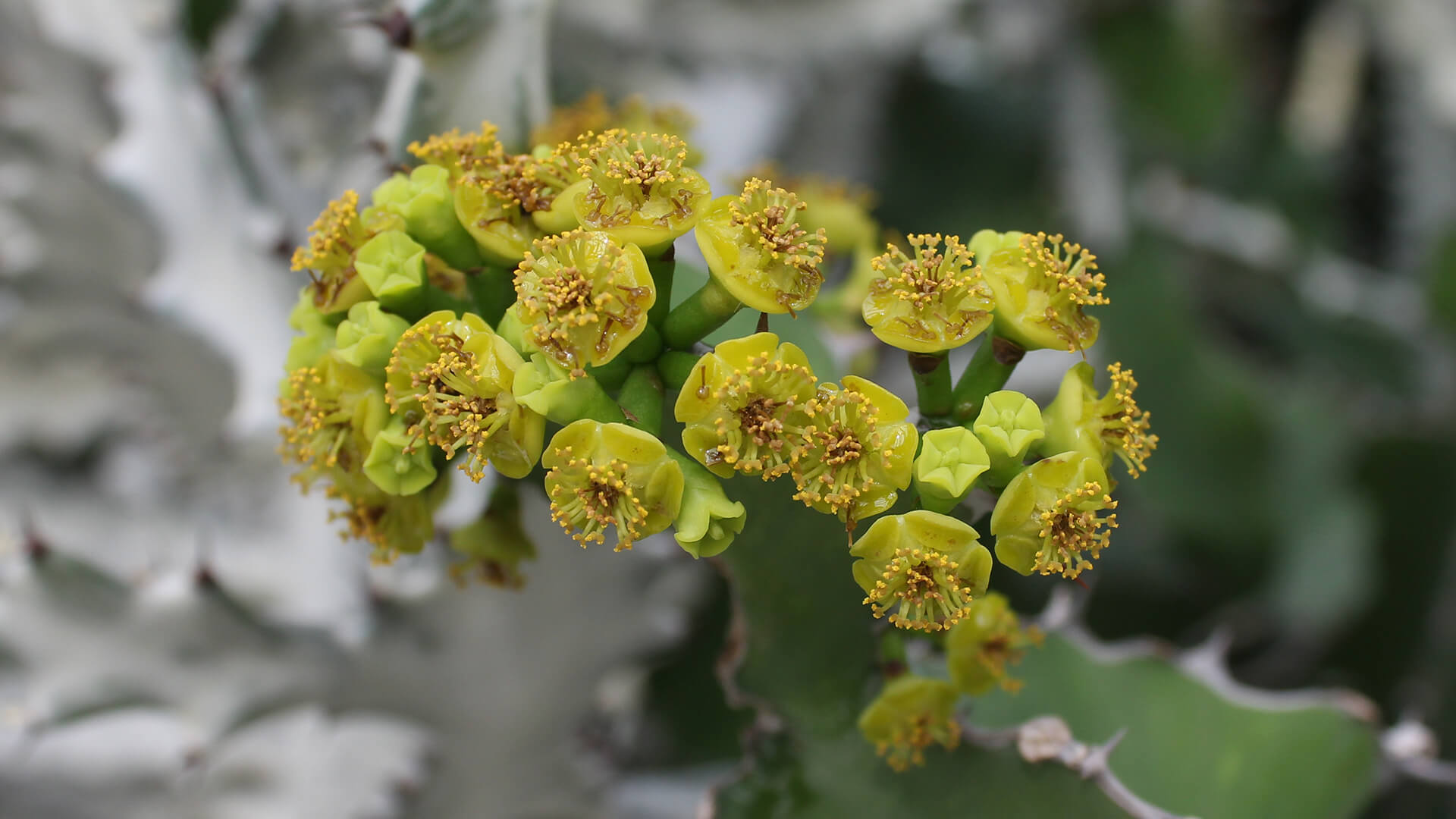

/1000x1000-thumb-scabiosa.jpg)
